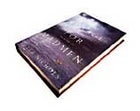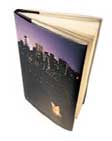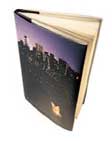CELEBRITY-endorsed thigh toners notwithstanding, nothing beats running for quick fitness. But fitness need not come at the expense of ankles, knees, and backs. Good running shoes are designed with cushioning and control foremost in mind. The dosage you need of each depends on how your body managesthree phases of the stride. The first is the heel strike: Each time your heel hits the ground it’s subjected to a force equivalent to three times your body weight, which pitches the heel over dangerously with each footfall. Next comes the midfoot phase, in which your foot splays to dissipate the load. Finally, there’s liftoff, when the ball of the foot incurs five times the body’s weight. The way a running shoe handles all this commotion determines who should use it.


Don’t like running on the road? You’ll need a high degree of support and protection. We used to call them trail runners, but with all the Raids and Eco-Challenges someone decided that “adventure racers” sounded cooler. Whatever. They’re still built with stable uppers, stiff soles for armor against rough trails, and a straight last to maximize control.
If your passion is for pavement, though, you’ll want plenty of padding and some help keeping both feet tracking straight, but you’ll need more flexibility. For that, try an all-arounder built on a less rigid, semicurved last. Within this category, if you’re flat-footed, buy a motion-control shoe; if you’re high-arched, buy a shock-absorbing model.
If you have no joint or biomechanical problems (we hate you), take advantage of lightweight trainers (under 22 ounces per pair). Trainers are built on pliable—and therefore not especially stable—C-shaped lasts (picture the imprint of your foot in sand).
We tested several shoes in each category, ten in all. Each one is a top performer, but only one is the shoe for you.
���ϳԹ��� Racers
Nike ACG Air Trigo
$65; 31.8 ounces (1)
You could chase down Sasquatch with the Trigos on your feet. This shoe has the grabbiest all-terrain sole ever glued to an upper: sharp, aft-angled lugs in front grip like mountain-bike tire treads when you hit an incline, and corresponding forward-angled treads on the heel prevent you from glissading out of control on the way down. A full-length nylon shank prevents sticks, stones, and broken Rolling Rock bottles from poking your tender soles. As for the uppers, a tall heel cup, stiff rand, and heavy-duty nylon mesh keep you anchored on the worst off-camber talus.
Salomon Raid Race
$100; 28 ounces (3)
From their one-yank, ultra-thin Kevlar laces to the polyurethane-reinforced midsoles that keep weight down and stiffness up, these shoes are made to race. Pounding up a hiking trail with a 15 percent grade, for instance, they have the feel of a lightweight trainer on a rubberized quarter-mile track: stable, comfortable, fast. The soles grip like lichen on slickrock, even if you’re boulder-hopping in a creek. Unfortunately, the shallow lugs clog instantly in mud, but an elastic ankle collar and watertight tongue keep all that goo on the outside.
Mountain Athletics Charging
$85; 30 ounces (6)
A crossover model for the urban runner who takes to the boonies on occasion, the Charging’s lightly lugged sole grips well in loose dirt (although it’s too shallow for mud or gravel), and the insole reins in a pronation-prone gait. Mountain Athletics has taken a comfortable running shoe and glued in a stiff, two-thirds-length nylon insole, creating an agile trail and road jogger. Since the nylon extends only partway, the shoe hinges for a silky liftoff. The Charging goes from urban decay to pastoral splendor with equal aplomb. Turn around when it gets rough, though—it lacks the protection for deep wilderness forays.
Adidas EQT Tangent Low
$100; 28.6 ounces (9)
���ϳԹ��� racing is tough duty, and it happens in hot places (don’t ask us why). So Adidas made the Tangent, which combines mesh uppers cool enough for the Sahara with a sole stout enough to fend off ankle-deep scree—think of an SUV with chunky tires and no roof. A fat rand armors your foot against scrapes, and even though there’s no shank, the foam midsole and dual-density outsole shrug off underfoot debris. Be warned: The lightweight uppers mean only those with soccer-player ankles can push it on steep terrain.
All-Arounders
Reebok Icon III DMX
$110; 30 ounces (2)
Go for a spin in this shoe and you’ll think you’re running on springy alpine tundra, thanks to the Icon’s raised-chamber sole, which suspends your foot on ten air pods. At first it feels awkward, almost tippy, but once you get used to it, those bubbles feel like magic fingers, massaging your soles, guiding your feet into perfect alignment, and soaking up uneven pavement like so many suspension forks. As for pronation control, while not on par with the Brooks, it’s more than adequate for many runners. Trust us. Your knees (and vertebrae, and hips, and physical therapist) will thank you.
New Balance 1040 BS
$110; 23.2 ounces (4)
If you can get over thinking that “1040 BS” sounds like some trenchant income-tax joke (sadly, it isn’t), you’ll find this shoe to be an all-arounder that performs like a lightweight trainer. The lightest-weight shoe that we tested in this class, the 1040 feels even lighter, due in part to a snug fit. Yet thanks to a forefoot cushion and a heel insert similar to the Saucony’s, there’s a lot more padding here than there is in the Asics. Light and plush, the 1040 is a speedy shoe for runners who like to force the pace but need shock absorption. Pronators, steer clear.
Brooks Adrenaline GTS
$85; 23.6 ounces (5)
Do your feet splay so badly it feels like you’ve got carp attached to your ankles? The Adrenaline takes charge of mutinous metatarsals as Border collies do unruly sheep. It has the best pronation control of this group—surprising, given that Brooks builds it on a semicurved last, usually a sign of compromise between stability and flexibility. But despite the lateral rigidity, there’s no lack of cushioning in the heel or forefoot, and even with all that support the shoe hinges perfectly on liftoff thanks to a slight gap between the tread blocks near the ball of the foot.
Saucony Grid Hurricane
$110; 25.6 ounces (6)
The term “pavement pounding” never would have been coined if the Hurricane had been around—the soft heel strike makes asphalt feel like beach sand. Credit a midsole with two densities of foam, and an elastic thermoplastic grid in the heel that absorbs shock while maintaining stability. The shoe is soft in the midfoot phase as well, but it’s best for mild pronators who want a livelier feel at liftoff; when the shoe hinges, it feels less plush than you’d expect after such a nice landing. Still, for the average heel-to-toe runner, the Hurricane is great for racking up above-average mileage.
Trainers
Mizuno Wave Phantom
$80; 16.4 ounces (8)
With mesh uppers held together by a latticework of synthetic leather, the Phantoms are nonpareil for ventilation. Despite the vaporlike weight, a well-cushioned heel and a surprisingly taut and supportive fit through the arch lift them out of the minimalist (read: punishing) racing-flats category. Mizuno’s rippled layer of polyurethane embedded in the rear of the sole crumples on impact, absorbing shock and stabilizing the heel—a design that works well with either a flat-footed jog or a heel-to-toe run. Pronation control is scant, as one would expect in an eight-ounce shoe. Still, that comfortable heel strike and feathery feel (we have socks that weigh more) constantly urge you on.
Asics Gel-Lyte DS
$85; 20 ounces (10)
Take the bare-bones recipe of the Mizunos, add gel at the heel and forefoot, and you get a shoe with similar warm-weather comfort but with shock absorption that would’ve been relegated to heavier shoes just a few years ago. Unlike the Mizunos, the Asics work best with a strong heel-to-toe stride—flat-footing it doesn’t seem to take advantage of the gel. From the comfortable heel cup to the wide forefoot sole that eases liftoff, the entire shoe works throughout the stride. In fact, if you’re not in the heavyweight class and don’t need excessive pronation control, this shoe could serve as an all-arounder on smooth roads.
Where to find it: Adidas, 800-982-9337, ; Asics, 800-678-9435, ; Brooks, 800-227-6657, ; Mountain Athletics, 800-445-5545, ; Mizuno, 800-966-1234, ; New Balance, 800-253-7463, ; Nike, 800-344-6453, ; Reebok, 800-648-5550, ; Salomon, 800-225-6850, ; Saucony, 800-365-7282,
A Voyage for Madmen, by Peter Nichols (HarperCollins, $26). In 1968 the Sunday Times of London sponsored the most audacious regatta in history: the Golden Globe, the first solo race around the world. Nine men entered a contest that would close the sextant age of sailing and open the era of high-tech adventure racing. One finished. Writer and sea hand Nichols recounts the strange fates of the winner, Robin Knox-Johnson, and the luckless eight—a mix of seasoned mariners and clueless landlubbers, from renowned French navigator Bernard Moitessier to British electrical engineer Donald Crowhurst, who barely made it out of the harbor. “Some of these chaps,” warned British sailor Francis Chichester, who had touched off the round-the-world mania with his own single-handed 1967 circumnavigation, “don’t know what they are letting themselves in for.” Nichols ably narrates a fascinating tale of sailors done in by terrifying storms and intense loneliness, but it’s his forays into nautical lore—the treachery and sanctity of Cape Horn, the vulnerability of a sailboat in modern shipping lanes—that bring the book alive. As for the race, one boat disintegrated off the coast of Brazil; 40-foot waves capsized another near the Cape of Good Hope; a third sank less than 1,000 miles from the finish. Moitessier got swept up by the Zen of the journey and ignored the fin ish line, completing a planet and a half before putting into port. But it is Crowhurst who remains indelibly linked to the race. Unprepared and sailing “a right load of plywood,” he hatched a plan to fake global passage by hiding at sea for eight months, and sailed listlessly around the Atlantic, radioing false positions. The plan nearly worked, until the weight of his deception pitched him into madness. His yacht was found adrift, the man himself a presumed suicide—thus leaving the ocean to the true salts.—Bruce Barcott
Wild Nights: Nature Returns to the City, by Anne Matthews (Farrar, Straus & Giroux, $22). Matthews (Where the Buffalo Roam) offers an urban bestiary, a feast of facts, interviews, and anecdotes suggesting that nature is turning up in radically unnatural New York. Her raw material is fascinating: Did you know that “raccoons have been seen teaching their kits to look both ways before crossing Manhattan streets”? Or that there are wild turkeys flying down Broadway (“making a left near Lincoln Center”), and coyotes heading into the Big Apple via the Major Deegan Expressway? Matthews’s opening chapter—on migrating birds killed or stunned by skyscrapers and the birders who patrol Wall Street at dawn to save the dazed survivors—will astonish lifelong city dwellers, just as an informal poll of city-bred students (“Birds shouldn’t be allowed in the city if they endanger us”) will appall nature lovers. And her descriptions are charming: The plumage of a female peregrine falcon chick, hatched on the 27th floor of New York Hospital, is “the bright opaque white of bond paper”; the falcon “smells like pepper and hay.” But for a journalism instructor who has taught at New York University, Matthews can be cavalier: Too many facts float free of attribution or context. We never learn, for example, who observed those pedagogically minded raccoons. And there are digressions on subjects covered better elsewhere (the black death, the razing of New York’s old Penn Station). An argument so compelling—that America’s urban spaces are being recolonized by nature—deserves better than conjecture and urban myth. —Caroline Fraser
New Books By Our Contributors
Why Moths Hate Thomas Edison And Other Urgent Inquiries into the Odd Nature of Nature: The Best of ���ϳԹ��� Magazine’s “The Wild File,” edited by Hampton Sides (W.W. Norton/���ϳԹ��� Books, $14). Contributing editor and former Wild File columnist Sides gathers the best from seven years of questions and answers about the natural world, laying bare such mysteries as why ducks float, where the white goes when snow melts, and where we really get our expert answers (the Wild File Bunker, of course, a climate-controlled, scientist-swarmed cavern deep in the New Mexico mountains).
Ghost Soldiers: The Forgotten Epic Story of World War II’s Most Dramatic Mission, by Hampton Sides (Doubleday Books, $25). Wild Filer Sides chronicles the daring April 1945 raid that freed 513 Bataan Death March survivors from Cabanatuan, a notorious Japanese prison camp in the Philippines.
The Bullfighter Checks Her Makeup: My Encounters with Extraordinary People, by Susan Orlean (Random House, $25). This occasional ���ϳԹ��� contributor’s collection takes its title from “La Matadora Revisa Su Maquillaje,” her 1996 ���ϳԹ��� profile of Spanish bullfighter Cristina Sánchez.
Racing the Antelope: What Animals Can Teach Us About Running and Life, by Bernd Heinrich (HarperCollins, $23). Biologist and ultra-marathoner Heinrich explores speed, evolution, and the thrill of the chase in his latest book, part of which appeared here last September.
Billy Ray’s Farm: Essays From a Place Called Tula, by Larry Brown (Algonquin, $23). Mississippi original Brown maps a literary geography of bulls, tractors, coyotes, baby goats—and a blessed event called a fishgrab.
Lost in Mongolia: Travels in Hollywood and Other Lands, by Tad Friend (AtRandom.com; e-book, $10; paperback, $19). Friend’s e-book includes, among other ���ϳԹ��� articles, “Please Don’t Oil the Animatronic Warthog,” a skeptical look at Disney’s Animal Kingdom.
The King of the Ferret Leggers and Other True Stories, by Donald Katz (AtRandom.com; e-book, $10; paperback, $15). Katz’s collection of magazine writings finds the ���ϳԹ��� contributing editor hanging with Jack LaLanne, Peter Beard, and the world champion of ferret-legging, a British sport involving the insertion of weasels down one’s trousers.
Fraud, by David Rakoff (Doubleday, $22). In his first nonfiction collection, ���ϳԹ���’s favorite urbanite joins a New Hampshire man on his 2,065th ascent of Mount Monadnock, and survives survival school in New Jersey, where the die-hard New Yorker is, for one brief, shining moment, “big man in Vole City.”


